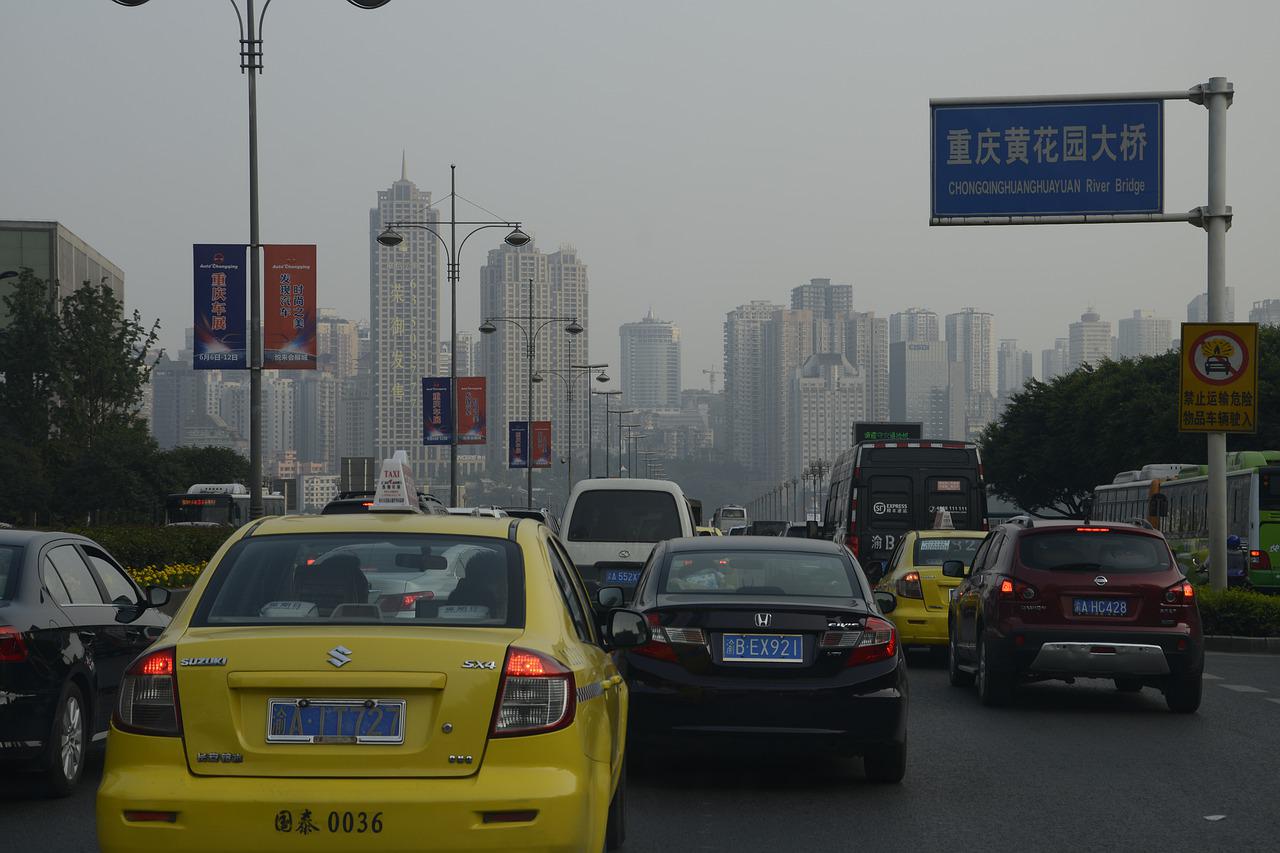Why has Usage-Based Insurance (UBI) not taken off in China?

China has the potential to launch Usage-Based Insurance (UBI) into the mass-market “limelight”, but price caps in response to aggressive pricing have neutralised growth in recent years. Is there light at the end of the tunnel?
As of the end of 2021, car ownership in China has reached 302 million . At the same time, auto vehicle insurance revenue has reached CNY 777.3 billion (around EUR 105 billion) . However, despite the large and mature auto insurance market, UBI is still in its infancy. What is hindering the UBI development in China? How will UBI develop in China market in the future? This article will answer these questions by telling a history of auto insurance development in China.
Reforms of auto insurance in China
The reform of auto insurance in China can be dated back to 2001. Before that, the commercial insurance premiums rate was strictly regulated by “Insurance Law” and each insurance product followed the uniform rate made by China Banking and Insurance Regulatory Commission.
Joining the WTO in 2001 was a turning point for China, which put forward higher requirements for China’s opening to the outside world. The entry of foreign insurance companies with mature insurance knowledge and advanced technology raised concerns about the development of China’s state-owned and local insurance companies. Therefore, the liberalisation of auto insurance rate gradually became the industry demand. At that time, many people believed that “marketisation” was the best way to solve problems.
Therefore, on 6 September 2001, the China Banking and Insurance Regulatory Commission issued “Notice on the Pilot Reform of Motor Vehicle Insurance Rates in Guangdong Province”, which allowed companies to formulate the premium rates independently in Guangdong Province. Since 2002, insurers in Guangdong successively lowered their auto insurance rates. They expected to seize the market quickly through discounts while maintaining a certain amount of agency fees, thereby sharply shrinking insurer profits. At the same time, insurance intermediaries also secretly offered customers additional discounts, which made the situation even worse. Although problems remained in the Guangdong market, the reform was still rolled out nationwide in 2003.
Not surprisingly, the issues that happened in Guangdong market also occurred and were even amplified in other areas. Many insurance companies adopted strategies of lowering insurance premiums and recruiting more salespeople, as well as participating in government procurement activities in illegal ways. Vicious competition led to a reduction of profits and the interruption of cash flow of some companies, and thus claims and employee’s salaries could not be paid in time.
Facing the market chaos, the regulatory organisation decided to intervene in the market. In May 2005, the “Notice on Carry out the Procedure of Rectifying and Regulating the Order of the Insurance Market in 2005” was issued, pointing out the problems in the auto insurance market, which included not-recorded receivable premiums or long-term pending premiums in the market, policy fraud and insufficient claims reserve.
On 1 July 2006, the “Statutory Automobile Liability Insurance” was introduced. On the same day, the Insurance Association of China launched three sets of additional commercial auto insurance products. Starting from July 2006, it is mandatory for car owners/managers to purchase “Statutory Automobile Liability Insurance” and selected additional insurance among three auto insurance products with different damage coverage. The industry once again returned to the era of unified auto insurance premium.
From 2006 to 2015, the auto insurance reform pressed the “pause button”. Instead of continuing the marketisation of auto insurance premiums, the industry focused on the problems raised during the first try of auto insurance reform, such as data transparency and authenticity, agency issues, and potential overcapacity. After this “rest” and rectification period, insurance companies gradually became profitable, costumers’ claims experience had improved. In order to continue the development of commercial auto insurance, in 2015, the regulatory organisation restarted the reform of auto insurance premiums.
On 20 March 2015, the China Banking and Insurance Regulatory Commission issued “the Work Plan for Deepening the Pilot System Reform of the Administration of the Commercial Motor Vehicle Insurance Clauses and Premium Rates”, which listed six provinces and cities as the pilot areas for commercial auto insurance reform. Property insurance companies in these 6 areas can declare commercial auto insurance terms and rates to the China Banking and Insurance Regulatory Commission in accordance with the Work Plan. However, based on the lessons from the previous reform, this time it followed a step-by-step approach: firstly, the companies can adjust the NCD factor coefficient within the range of 0.6 to 2.0, and the independent pricing coefficient within the range of 0.85 to 1.15. From 1 January 2016, 12 more areas were included in the pilot program, and on 1 July, 18 more areas were included. So far, the first step of commercial auto insurance reform had been implemented nationwide in three batches.
Later in June 2017 and March 2018, the China Banking and Insurance Regulatory Commission made two adjustments for factor coefficient adjustment range. At the end of March 2018, the reform accelerated: the China Banking and Insurance Regulatory Commission issued “the Pilot Program of the Self-determined Pricing Reform of Commercial Motor Vehicle Insurance” which liberalised pricing ability for auto insurance companies in Guangxi, Shaanxi and Qinghai for a pilot period of one year.
The state of usage-based insurance in China today
In our Connected Auto Insurance Global Study, we observed the emergence of UBI products in China during this period. Many companies were encouraged by the positive regulation environment and therefore, actively explored the application of UBI in passenger cars and commercial vehicles by conducting pilot programs. The main goals were collecting user data and improving user experience. However, after the trial period, the development of UBI programs also pressed the “pause button” because of various reasons, one of which is a lack of specific regulations to support.
To deepen the reform, in September 2020, the China Banking and Insurance Regulatory Commission issued the “Guide on Implementing Comprehensive Reform of Auto Insurance” . It’s the first time the regulations mentioned UBI: “Develop innovative products such as vehicle mileage insurance (UBI) in electric vehicles and qualified traditional vehicles”. Since the release of this regulation, we have observed some positive movements in the UBI China market.
What else is hindering the development of usage-based insurance in China aside from regulations? We believe that today, the positive regulation environment, mature automobile infrastructure and improved data processing capabilities have made China a seedbed for UBI products. However, since UBI involves a large amount of private data of car owners, the blurred boarder between accurate pricing and price discrimination as well as companies’ potential abuse of pricing power, the development of UBI still requires a lot of effort. We believe that the breakthrough should be in electric vehicles, as OEMs can access comprehensive driving data easily. Chinese insurance companies are currently working on providing suitable insurance for electric vehicles. There is a huge potentiality to develop UBI in the electric vehicles market. Hence, we have observed the recent activities of electric vehicles OEMs setting up insurance brokerage companies in China.
From the introduction of auto insurance in China, the market has experienced a cycle of “closed – open – suspended – reopening”. Before, it was mainly dominated by regulatory organisation. Because of the previous lessons, the pricing power has been gradually and cautiously released to the market since 2015. Currently, the market is at the preliminary stage of reopening. What’s more, the lack of further regulations supports also led to most companies adopting a “wait-and-see” attitude towards UBI. The development of usage-based insurance in China, while full of potential, still needs more exploration and support, especially from regulators.

